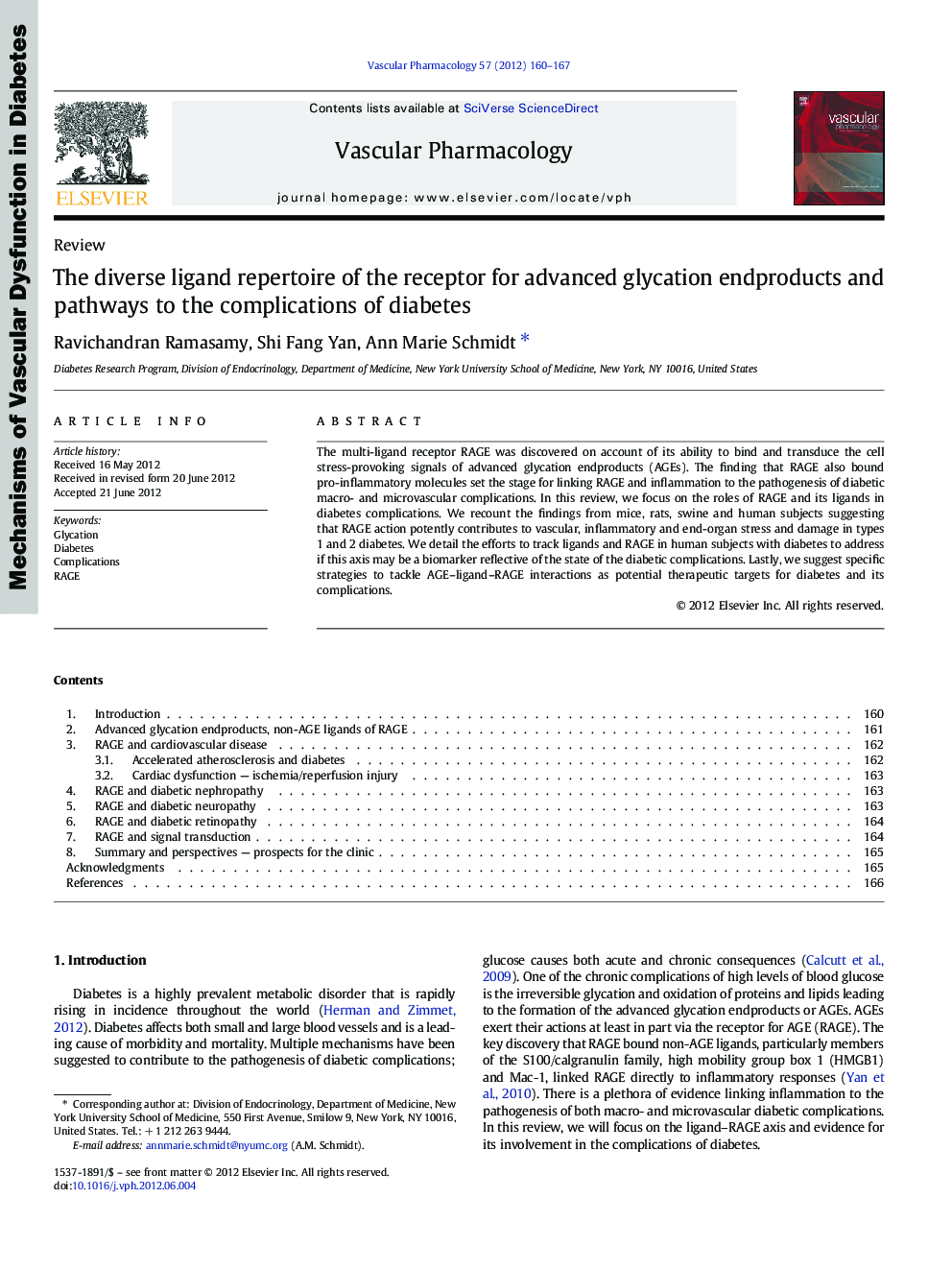| Article ID | Journal | Published Year | Pages | File Type |
|---|---|---|---|---|
| 2574336 | Vascular Pharmacology | 2012 | 8 Pages |
The multi-ligand receptor RAGE was discovered on account of its ability to bind and transduce the cell stress-provoking signals of advanced glycation endproducts (AGEs). The finding that RAGE also bound pro-inflammatory molecules set the stage for linking RAGE and inflammation to the pathogenesis of diabetic macro- and microvascular complications. In this review, we focus on the roles of RAGE and its ligands in diabetes complications. We recount the findings from mice, rats, swine and human subjects suggesting that RAGE action potently contributes to vascular, inflammatory and end-organ stress and damage in types 1 and 2 diabetes. We detail the efforts to track ligands and RAGE in human subjects with diabetes to address if this axis may be a biomarker reflective of the state of the diabetic complications. Lastly, we suggest specific strategies to tackle AGE–ligand–RAGE interactions as potential therapeutic targets for diabetes and its complications.
Graphical abstractFigure optionsDownload full-size imageDownload high-quality image (72 K)Download as PowerPoint slide
